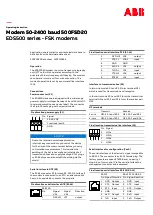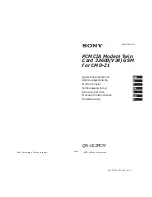
©2015 Cradlepoint. All Rights Reserved.
|
+1.855.813.3385
|
cradlepoint.com
74
User Manual
/
AER3100/AER3150
NETWORK PREFIX TRANSLATION
Network Prefix Translation is used in IPv6 networks to translate one IPv6 prefix to another.
IPv6 prefix
translation
is an experimental specification (
RFC 6296)
trying to achieve address independence similar to NAT
in IPv4. Unlike NAT, however, NPT is stateless and preserves the IPv6 principle that each device has a routable
public address. But it still breaks any protocol embedding IPv6 addresses (e.g. IPsec) and is generally not
recommended for use by the IETF. NPT can help to keep internal network ranges consistent across various IPv6
providers, but it cannot be used effectively in all situations.
The primary purpose for Cradlepoint’s NPT implementation is for failover/failback and load balancing setups.
LAN clients can potentially retain the original IPv6 lease information and may experience a more seamless
transition when WAN connectivity changes than if not utilizing NPT.
Mode
:
•
None
– No translation is performed
•
Load Balance Only
– (Default) Only translate networks when actively load balancing
•
First
– Use the first IPv6 prefix found
•
Static
– Always use a static IPv6 translation (input the prefix here)
Transitioning from short prefix to a longer prefix (such as from /48 to /64) is not without problems, as some of
the LANs may lose IPv6 connectivity.
REMOTE ACCESS RESTRICTION
Add any IPv4 addresses that need access to remote administration to this list. Clicking
Add
will allow the
addition of IP address and netmask pairs to the administration filter.
Edit
will allow you to change settings for
the selected address.
Remove
will remove a selected entry.
Application Gateways
Enabling an application gateway makes pinholes thru the firewall. This may be required for some applications
to function, or for an application to improve functionality or add features.
NOTE:
Exercise caution in enabling application gateways as they impact the security of your network.
•
PPTP:
For virtual private network access using Point to Point Tunneling Protocol.
•
SIP:
For Voice over IP using Session Initiation Protocol.
•
TFTP:
Enables file transfer using Trivial File Transfer Protocol.
•
FTP:
To allow normal mode when using File Transfer Protocol. Not needed for passive mode.
•
IRC:
For Direct Client to Client (DCC) transfer when using Internet Relay Chat. You may wish to forward TCP
port 113 for incoming identd (RFC 1413) requests.
DMZ (Demilitarized Zone)
A DMZ host is effectively not firewalled in the sense that any computer on the Internet may attempt to
remotely access network services at the DMZ IP address. Typical uses involve running a public web server,
supporting older games, or sharing files.
NOTE:
As with port forwarding, caution should be used when enabling the DMZ feature as it can threaten the
security of your network.















































